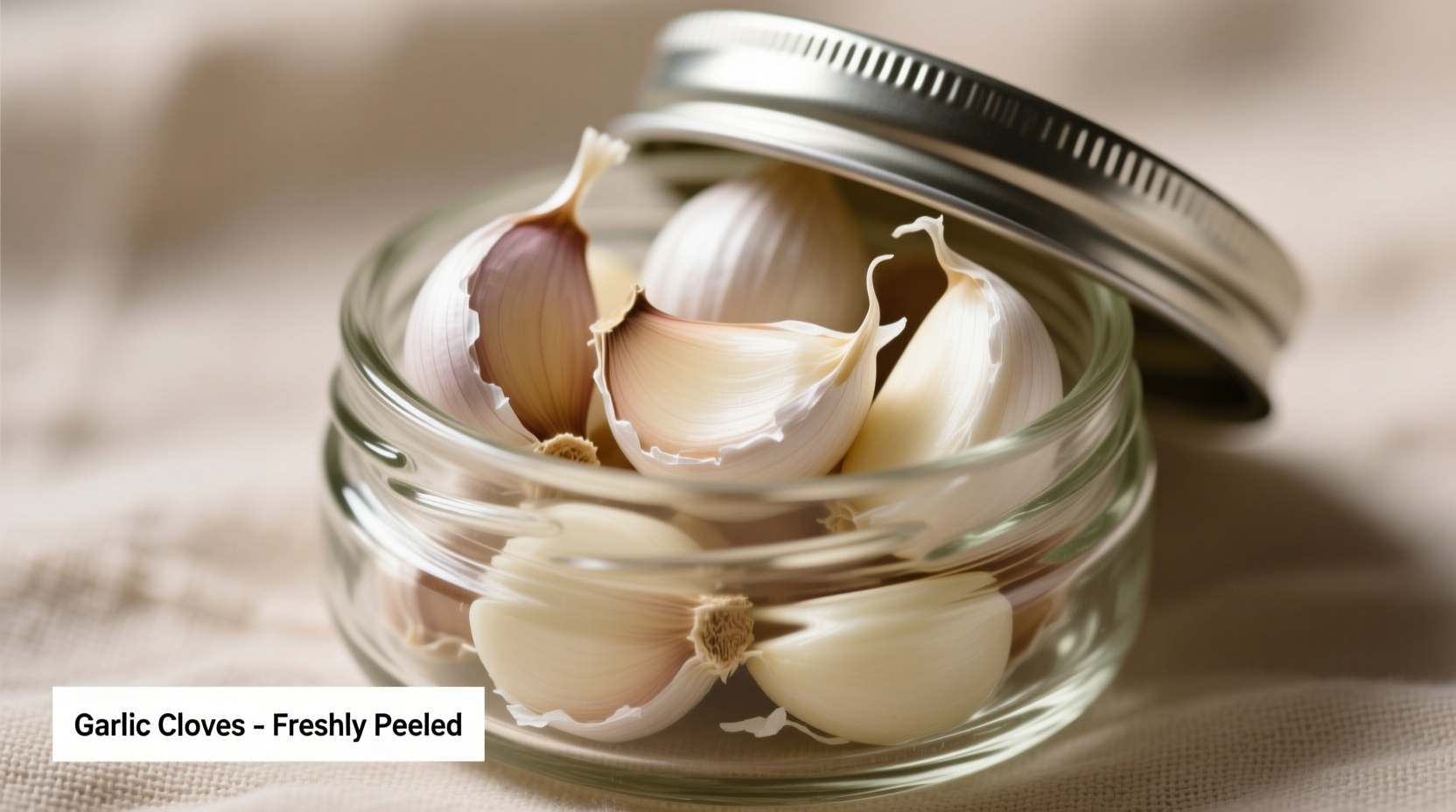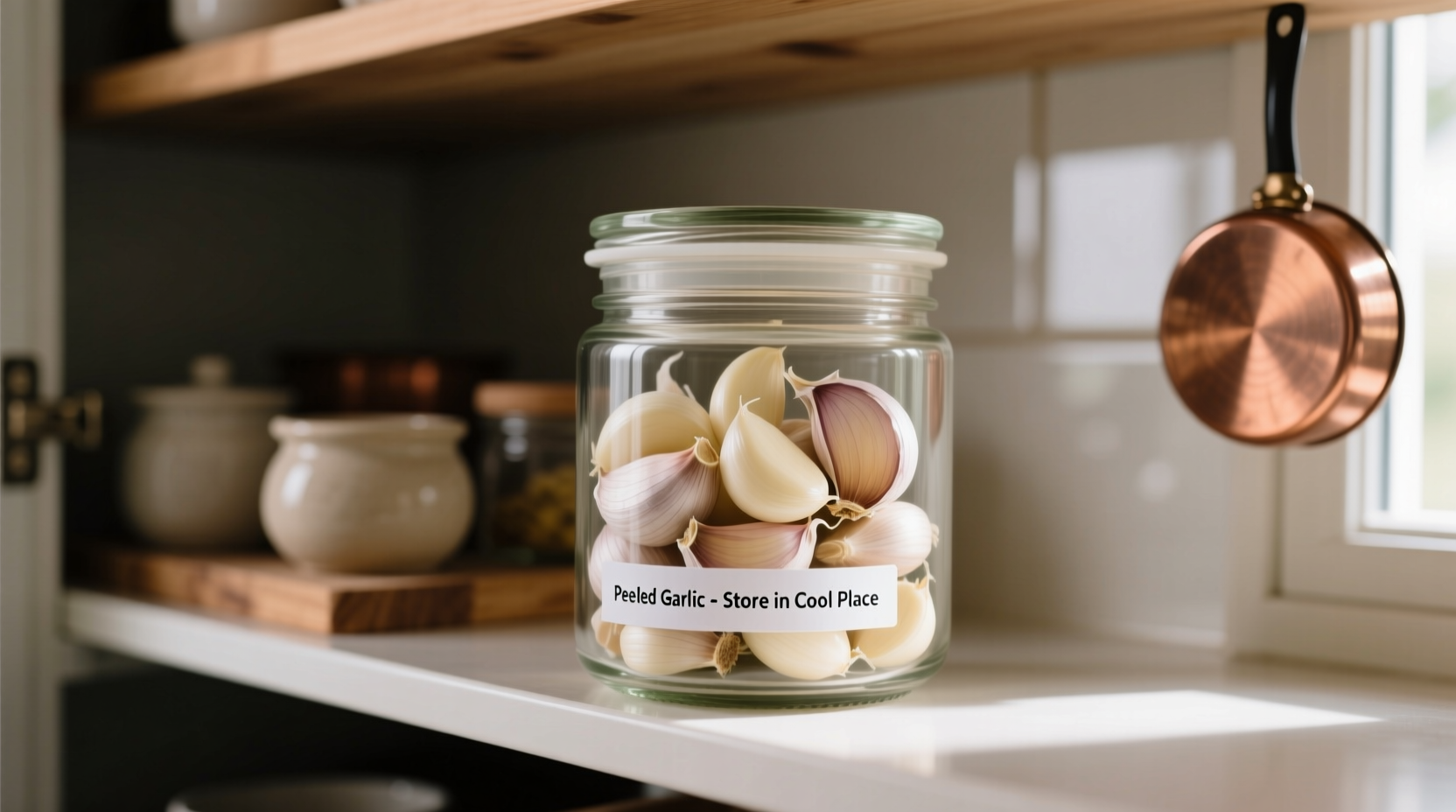Discover the safest, most effective methods to preserve your peeled garlic's flavor and prevent waste. Whether you've prepped a large batch for meal prep or have leftovers from a recipe, proper storage extends freshness while maintaining that vibrant garlic punch your dishes deserve.
Why Proper Garlic Storage Matters
Improperly stored garlic doesn't just lose its flavor—it can become unsafe to eat. When garlic sits in conditions that encourage bacterial growth, particularly Clostridium botulinum, the risk of foodborne illness increases significantly. The USDA Food Safety and Inspection Service emphasizes that low-acid foods like garlic require careful temperature management to prevent dangerous bacterial proliferation.
Step-by-Step Storage Methods
Refrigeration: Best for Short-Term Use
When you need peeled garlic to last 3-7 days, refrigeration provides the simplest solution. Follow these steps for optimal results:
- Dry cloves thoroughly with a clean paper towel
- Place in an airtight container with a slightly damp paper towel
- Store in the main compartment of your refrigerator (not the door)
- Maintain temperature below 40°F (4°C) as recommended by FDA guidelines
This method preserves garlic's crisp texture while preventing premature sprouting. The University of California Cooperative Extension confirms that properly stored peeled garlic maintains quality for 5-7 days under these conditions.
Freezing: Long-Term Flavor Preservation
Freezing transforms how home cooks manage garlic inventory. Two effective approaches exist:
| Method | Preparation | Storage Duration | Best For |
|---|---|---|---|
| Plain Freezing | Spread cloves on parchment paper, freeze solid, then transfer to container | 6 months | Roasting or whole clove applications |
| Oil-Infused Freezing | Place cloves in ice cube tray, cover with oil, freeze, then transfer to bag | 4 months | Sautéing and cooking applications |
According to research from the National Center for Home Food Preservation, freezing garlic in oil requires immediate freezing after preparation to prevent bacterial growth during the transition period. Never leave garlic in oil at room temperature for more than 2 hours.
Avoiding Dangerous Storage Mistakes
The most critical error home cooks make involves storing garlic in oil at room temperature. The FDA explicitly warns that this creates ideal conditions for botulism toxin production. Even refrigeration doesn't eliminate this risk completely—garlic stored in oil should be consumed within 7 days and kept below 38°F (3°C).
Additional storage pitfalls include:
- Using non-airtight containers that allow moisture buildup
- Storing near strong-smelling foods that garlic readily absorbs
- Keeping in warm areas of the kitchen like near the stove
Recognizing Spoiled Garlic
Before using stored garlic, perform these quick checks:
- Visual inspection: Look for yellow or brown spots, mold growth, or excessive softness
- Smell test: Discard if you detect sour, unpleasant odors beyond normal garlic aroma
- Texture check: Properly stored garlic should remain firm, not mushy
The Cornell University Food Safety program notes that garlic showing even minor discoloration may have begun enzymatic breakdown that affects both flavor and safety.
Maximizing Flavor in Stored Garlic
Professional chefs employ these techniques to maintain garlic's complex flavor profile during storage:
- Add a pinch of salt to refrigerated containers to slow enzymatic browning
- When freezing in oil, use neutral oils like avocado instead of olive oil for longer stability
- Label containers with preparation date using waterproof markers
- Store in glass containers rather than plastic to prevent odor absorption
For immediate use after storage, let refrigerated garlic sit at room temperature for 15 minutes before cooking. This temperature adjustment helps restore optimal flavor release during cooking, as confirmed by flavor chemistry studies from the Institute of Food Technologists.

Seasonal Storage Considerations
Garlic's storage needs change with seasonal kitchen conditions:
- Summer months: Increase refrigerator checks as higher ambient temperatures affect internal fridge conditions
- Winter months: Freezing becomes more reliable as home temperatures stay cooler
- Humid climates: Include extra paper towels in containers to manage moisture
- Dry climates: Reduce paper towel moisture to prevent dehydration
These adjustments reflect the practical wisdom shared by culinary professionals across different regions, as documented in the American Culinary Federation's seasonal cooking guidelines.
Practical Storage Timeline
Understanding how quickly garlic degrades helps prevent waste:
- 0-24 hours: Peak flavor and enzyme activity
- 2-3 days: Optimal window for refrigerated storage
- 4-7 days: Acceptable but declining quality in refrigerator
- 1-2 weeks: Maximum safe duration for oil-stored refrigerated garlic
- 1-6 months: Viable frozen storage period depending on method
This timeline aligns with recommendations from the National Garlic Growers Association, which tracks quality metrics across storage conditions.











 浙公网安备
33010002000092号
浙公网安备
33010002000092号 浙B2-20120091-4
浙B2-20120091-4